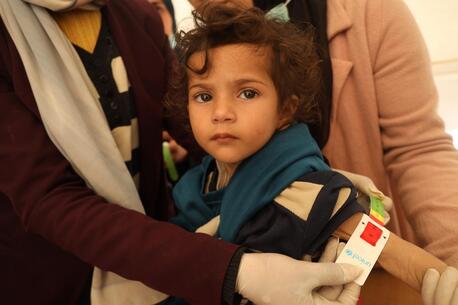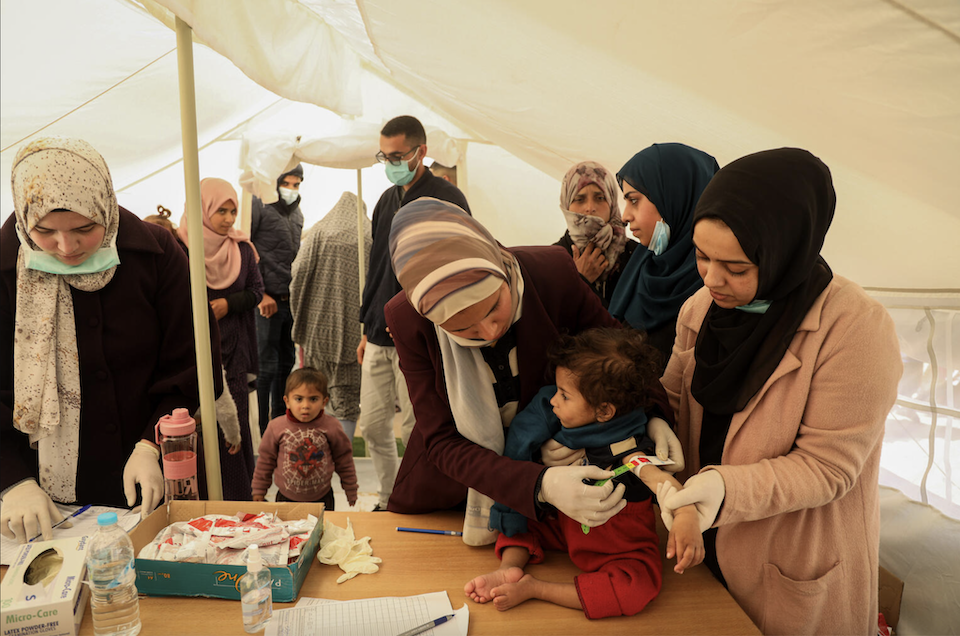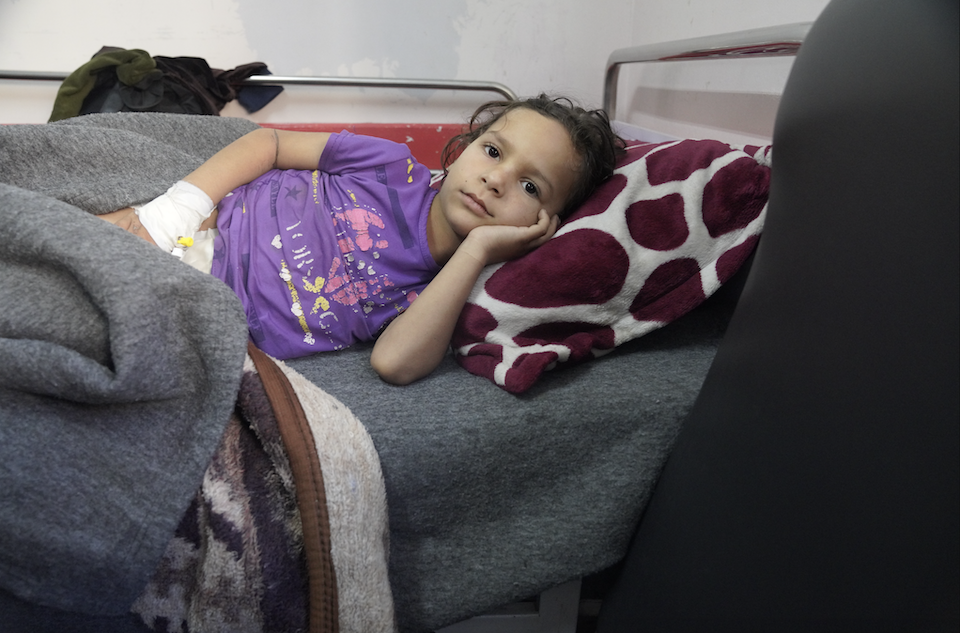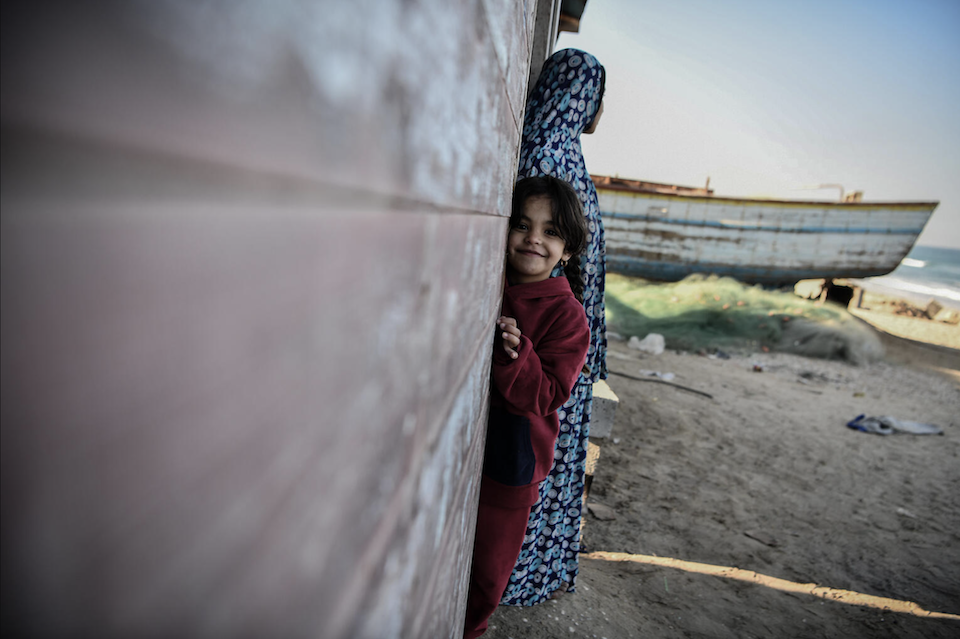
Rising Malnutrition Puts Children's Lives at Grave Risk in Gaza
As the conflict in Gaza enters its 20th week, an unprecedentedly rapid rise in malnutrition is threatening the lives of children and pregnant and breastfeeding women in the Gaza Strip.
Gaza is on the brink of a nutrition crisis
Amid ongoing hostilities following the Oct. 7 attack on Israel, as UNICEF continues to call for an immediate humanitarian ceasefire and the safe return of all hostages, food and safe water are scarce in the Gaza Strip and children are experiencing a sharp increase in malnutrition, according to a comprehensive new analysis released by the Global Nutrition Cluster, a group of UN and non-UN humanitarian organizations including UNICEF, the World Food Program (WFP) and the World Health Organization (WHO).
Such a steep decline in a population's nutritional status in just three months is unprecedented, globally.
The situation is particularly extreme in northern Gaza, which has been almost completely cut off from aid for weeks. Nutrition screenings conducted at shelters and health centers in the north in January found that 1 in 6 children under age 2 — 15.6 percent — are acutely malnourished. Of these, almost 3 percent suffer from severe wasting, the most life-threatening form of malnutrition, which puts children at highest risk of medical complications and death unless they receive urgent treatment. The total number of acutely malnourished children is expected to have risen even higher in the days and weeks since the screenings occurred.
Similar screenings for children between the ages of 6 months and age 5 in Rafah governorate in southern Gaza, where aid has been more available, found that 5 percent of children under 2 are acutely malnourished — a clear indication that access to humanitarian aid is urgently needed and can help prevent the worst outcomes.

Unless the conflict ends now, children's nutrition in Gaza will continue to plummet
"The Gaza Strip is poised to witness an explosion in preventable child deaths which would compound the already unbearable level of child deaths in Gaza," said UNICEF Deputy Executive Director for Humanitarian Action and Supply Operations Ted Chaiban. "We've been warning for weeks that the Gaza Strip is on the brink of a nutrition crisis. If the conflict doesn't end now, children's nutrition will continue to plummet, leading to preventable deaths or health issues which will affect the children of Gaza for the rest of their lives and have potential intergenerational consequences."
Before the recent months' hostilities, wasting in the Gaza Strip was rare, with just .08 percent of children under 5 acutely malnourished. The rate of 15.6 percent wasting among children under 2 in northern Gaza suggests a serious and rapid decline.

An alarming lack of food, safe water and health and nutrition services
Over 600,000 Palestinian children and their families, displaced from other parts of Gaza, have crowded into Rafah in the southern Gaza Strip, pushing available resources to their limit. Rasha, a pregnant 26-year-old mother of three now sheltering in Khan Younis, recently described how her family survived on one meal a day, relying on cans of lentils and beans. “With just one container of formula remaining, I resorted to adding a single spoon to the entire bottle for my youngest child, allowing my kid to catch the smell of the milk before drinking it," she explained.
There is a high risk that malnutrition will continue across the Gaza Strip, due to the alarming lack of food, safe water and health and nutrition services, the report found:
- 90 percent of children under the age of 2 and 95 percent of pregnant and breastfeeding women face severe food poverty — meaning they have consumed less than two food groups in the previous day — and the food they do have access to is of the lowest nutritional value
- 95 percent of households are limiting meals and portion sizes, with 64 of households eating only one meal a day
- over 95 percent of households said they had restricted the amount of food adults received in order to ensure small children had food to eat

UNICEF and partners are calling for safe, unimpeded and sustained access to deliver urgently needed humanitarian aid to malnourished and at-risk children and women in Gaza
Inadequate safe drinking water, along with sufficient water for cooking and hygiene purposes, are making a bad situation worse. Hungry, thirsty and weak, Gazans are becoming sick. The report finds that at least 90 percent of children under 5 are affected by at least one infectious disease. Seventy percent had diarrhea in the past two weeks, 23 times higher than the 2022 baseline.
"Hunger and disease are a deadly combination," said Dr. Mike Ryan, Executive Director's of the WHO's Health Emergencies Program. "Hungry, weakened and deeply traumatized children are more likely to get sick, and children who are sick, especially with diarrhea, cannot absorb nutrients well. It's dangerous and tragic, and it's happening before our eyes."
Without more humanitarian assistance, the nutritional situation is likely to deteriorate across the Gaza Strip. UNICEF and colleagues are calling for safe, unimpeded and sustained access to urgently deliver multi-sectoral humanitarian assistance throughout Gaza, including the delivery of nutritious foods, nutrition supplies and essential services for malnourished and at-risk children and women, particularly infants and children under 5.
Your donation can make a difference in a child's life. Please donate.
Learn more about what it's like to be a child in Gaza right now.


